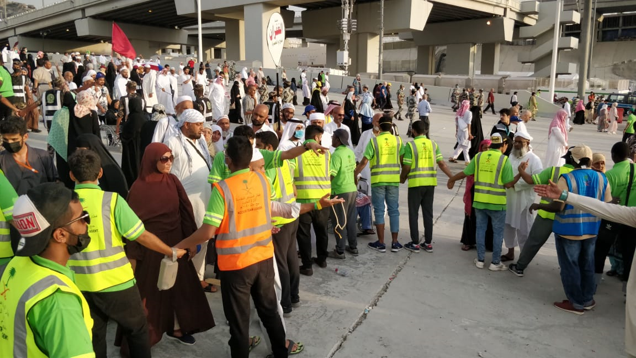Crowd management is: the process of organizing and leading large groups of people at public events or crowded locations. Crowd management requires a deep understanding of crowd behavior and organizing them in an effective and safe manner. Crowd management techniques are used in many areas, including sporting events, concerts, trade shows, and large public venues.


Crowd management relies on a set of principles and techniques to ensure the safe and smooth movement of people within a crowd. Here are some key points for effective crowd management:
1. Event Planning: Crowd management begins before the actual event begins. A detailed plan is developed that outlines the order of events and the necessary security measures. This includes identifying sensitive points, emergency exits, and developing plans to deal with potential emergencies.
2. Coordination and cooperation: Many different parties are involved in crowd management, including police, organizers, and other stakeholders. There must be good coordination between these parties to ensure smooth crowd flow and effective security measures.
3. Traffic Guidance: Traffic guidance aims to direct crowds and improve the flow of people. This is done by using visual signals and markers, directing crowds to designated aisles and emergency exits, and avoiding obstacles that can lead to crowd congestion.
4. Communication: Effective communication is crucial in crowd management. Effective means of communication must be provided to convey information and instructions to the crowd. This includes the use of loudspeakers, displays, and social media to disseminate important information and direct the crowd.
5. Safety and Emergencies: There should be clear plans to deal with emergencies and unexpected situations. Emergency teams should be trained to respond quickly to potential emergencies such as stampedes or injuries.
6. Evaluation and continuous improvement: After the event, a comprehensive crowd management evaluation should be conducted. The results are analyzed and lessons learned are drawn to improve future procedures.
Crowd management is a process that relies on expertise and good planning, and requires strong coordination and cooperation between the stakeholders. The main goal of crowd management is to ensure the safety and security of people within the crowd, and to achieve a smooth and orderly flow of crowds.
Ultimately, crowd management is about balancing the needs and expectations of the crowd with ensuring everyone’s safety. By adopting appropriate crowd management principles and techniques, a positive and safe experience for all at events and crowded venues can be achieved.
Crowd Management Techniques
Among the techniques used in crowd management:
1. Flow Monitoring Systems: Flow monitoring systems are one of the modern technologies used in crowd management. These systems rely on the use of cameras and computer vision technologies to analyze crowd movement and flow. The data is collected and processed to detect movement patterns and identify hotspots and congested areas. This information can help in making informed decisions about crowd routing and allocating resources effectively.
2. Communication Technologies: Modern communication technologies play an important role in crowd management. Wireless communication systems, such as radio and mobile phones, can be used to facilitate communication between the various stakeholders involved in the crowd management process. Information and directions are exchanged quickly and effectively, which helps in organizing the crowds and dealing with any emergencies that may arise.
3. Use of data and analysis: Analytics and data technologies play an important role in understanding and directing crowd behavior. Data is collected from various sources, such as social media and sensors, and analyzed to learn about patterns and trends and predict future crowd behavior. This information can be used to improve crowd routing and use resources more effectively.
4. Intelligent routing systems: Intelligent routing systems rely on the use of communication technologies and geographic information to direct crowds in efficient and smooth ways. Interactive displays or smart routing boards are used to direct people to the appropriate lanes and avoid congestion and overcrowding. These systems can be adjusted to direct crowds based on information derived from flow monitoring systems and data analysis.
5. Alert and Emergency Systems: Alert and emergency systems are an important part of crowd management. Visual and audible alert devices, such as public announcements and alarms, can be used to disseminate warning and guidance signals in emergency situations. These systems are coordinated with relevant agencies, such as police and rescue teams, to deal with any security or emergency problems that arise in crowds.
6. Crowd Modeling and Simulation: Crowd modeling and simulation techniques are used to understand crowd behavior and evaluate the impact of different crowd management measures. Digital crowd models are created using movement data and behavior patterns, and are used to experiment with different scenarios and evaluate the effectiveness of management measures.
These crowd management technologies are innovative and essential for effective crowd management and safety at public events and crowded venues. They are constantly being developed and improved to address emerging challenges and ensure the optimal crowd management experience.